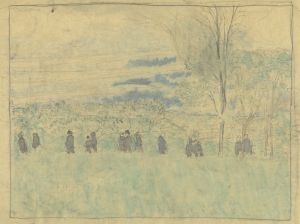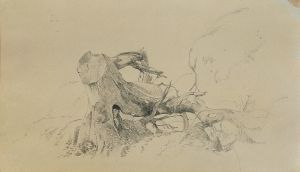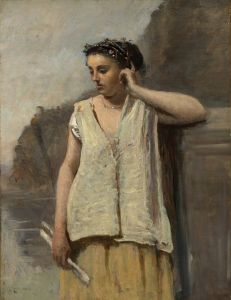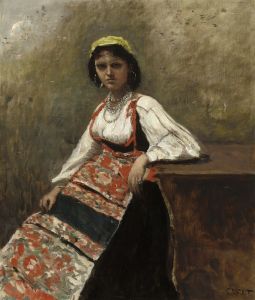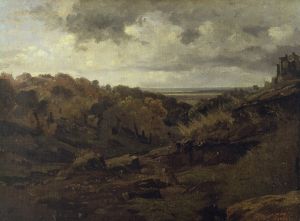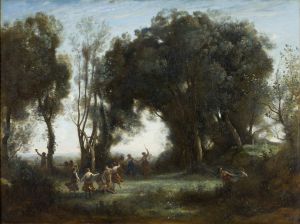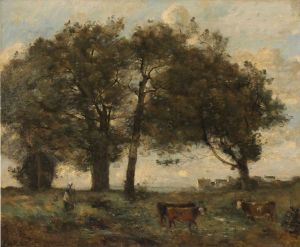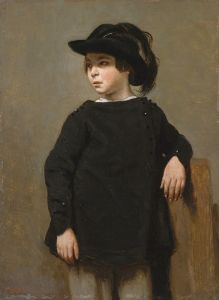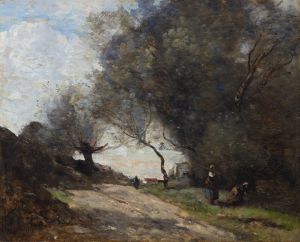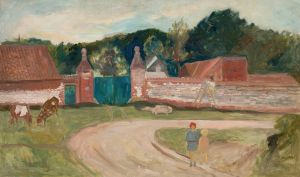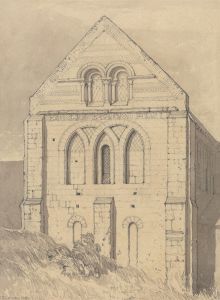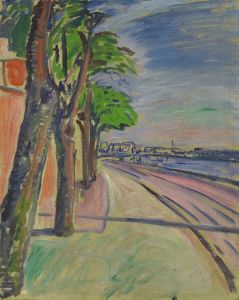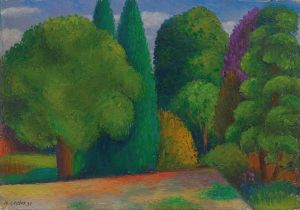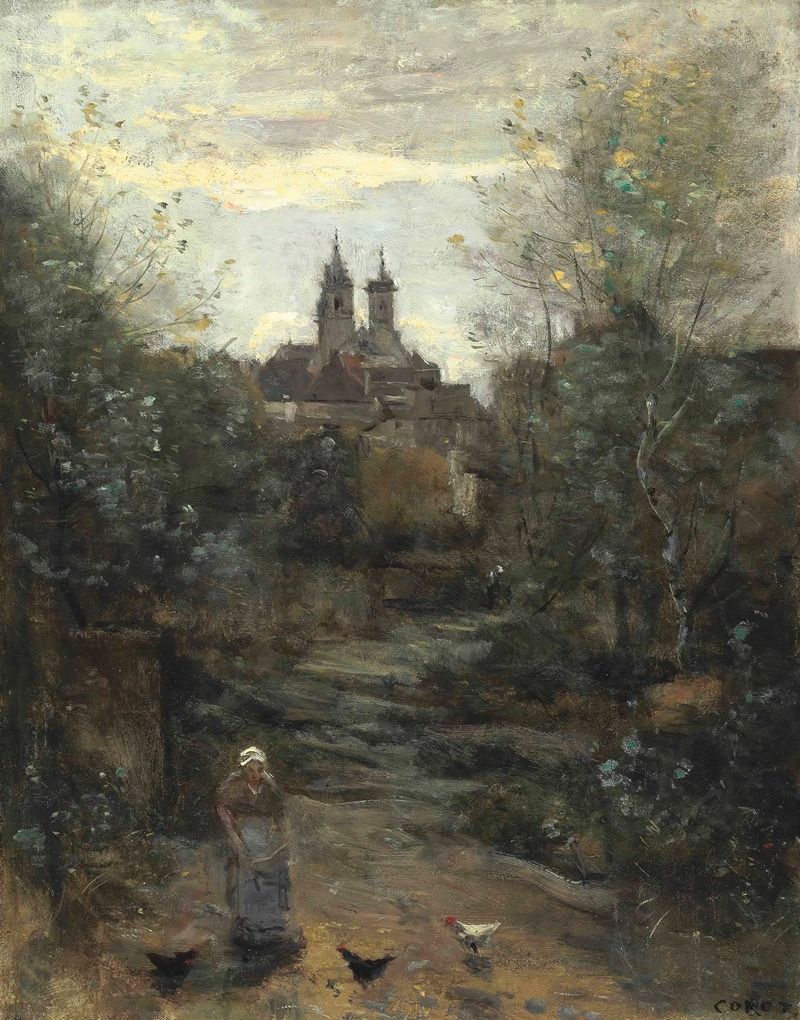
Semur, Le Chemin De L’église
A hand-painted replica of Jean-Baptiste-Camille Corot’s masterpiece Semur, Le Chemin De L’église, meticulously crafted by professional artists to capture the true essence of the original. Each piece is created with museum-quality canvas and rare mineral pigments, carefully painted by experienced artists with delicate brushstrokes and rich, layered colors to perfectly recreate the texture of the original artwork. Unlike machine-printed reproductions, this hand-painted version brings the painting to life, infused with the artist’s emotions and skill in every stroke. Whether for personal collection or home decoration, it instantly elevates the artistic atmosphere of any space.
Jean-Baptiste-Camille Corot was a pivotal figure in landscape painting during the 19th century, and his work "Semur, Le Chemin De L’église" is a testament to his mastery of capturing the serene beauty of rural France. Corot, born in Paris in 1796, was a leading figure in the Barbizon School, a movement that emphasized naturalism and paved the way for the Impressionists. His work often bridges the gap between the neoclassical tradition and the burgeoning impressionist movement, showcasing his unique ability to blend realism with a more poetic, atmospheric approach.
"Semur, Le Chemin De L’église" is one of Corot's many landscapes that reflect his deep appreciation for the French countryside. The painting depicts a tranquil scene in the town of Semur-en-Auxois, located in the Burgundy region of France. This area was known for its picturesque landscapes and historical architecture, which provided ample inspiration for Corot's work. The painting captures a path leading to a church, a common motif in Corot's oeuvre, symbolizing both a literal and metaphorical journey.
Corot's technique in this painting exemplifies his skillful use of light and shadow to create depth and mood. The soft, diffused light typical of Corot's landscapes is present here, lending the scene a dreamlike quality. His brushwork is delicate yet confident, with a focus on capturing the essence of the scene rather than minute details. This approach allows viewers to feel the atmosphere of the place, as if they are walking along the path themselves.
The composition of "Semur, Le Chemin De L’église" is carefully balanced, with the path leading the viewer's eye towards the church, which is partially obscured by trees. This creates a sense of mystery and invites contemplation, a hallmark of Corot's work. The trees and foliage are rendered with a light touch, emphasizing their natural forms without overwhelming the composition. Corot's palette is typically muted, with earthy tones that enhance the naturalism of the scene.
Corot's influence on later artists cannot be overstated. His ability to convey mood and atmosphere through landscape painting was a significant precursor to the Impressionist movement. Artists such as Claude Monet and Camille Pissarro admired Corot's work and were inspired by his innovative approach to capturing light and nature. "Semur, Le Chemin De L’église" is a fine example of how Corot's work straddles the line between traditional landscape painting and the more modern, impressionistic style that would soon emerge.
Throughout his career, Corot remained dedicated to exploring the beauty of the natural world. His landscapes, including "Semur, Le Chemin De L’église," are celebrated for their ability to evoke a sense of peace and reflection. Today, Corot's works are held in high esteem and can be found in major museums and collections around the world, where they continue to inspire and captivate audiences with their timeless beauty.





